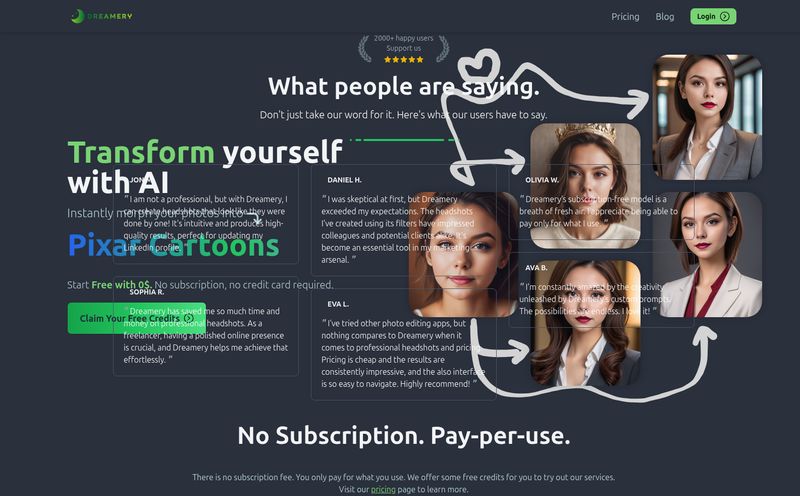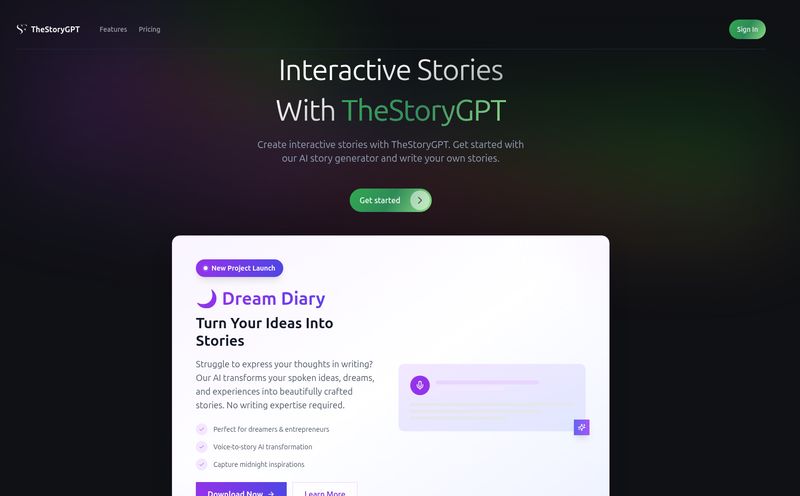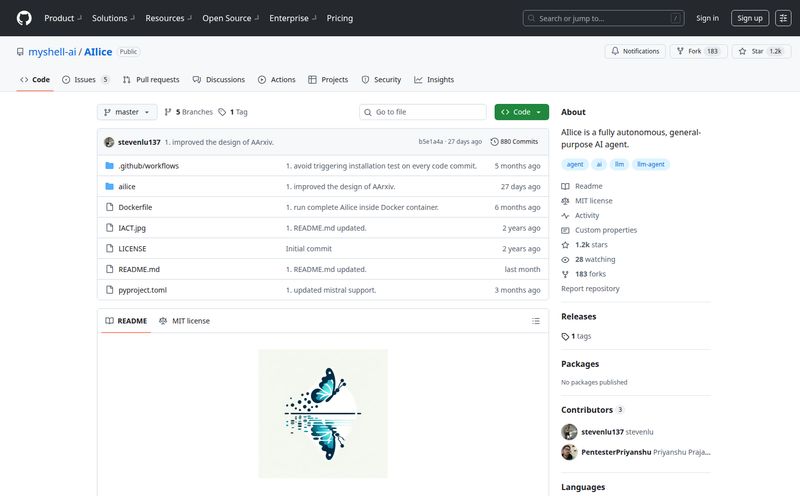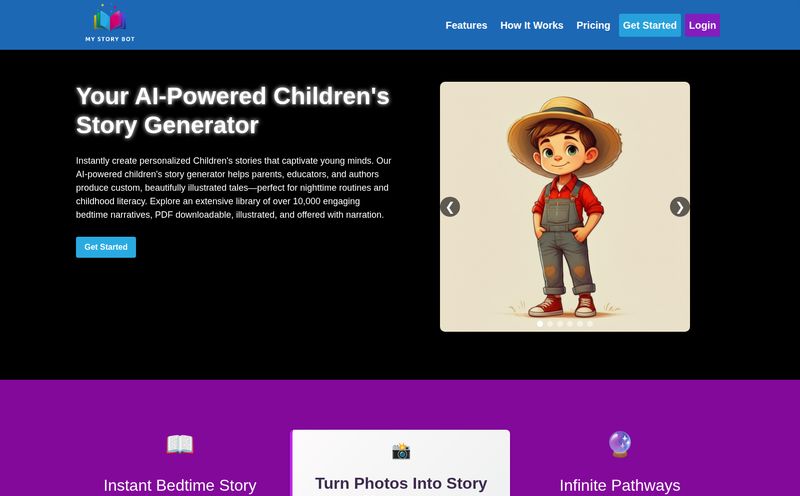We’ve all been there. You find an amazing, long-form article you’re dying to read, but you have exactly zero time to sit down and stare at a screen. Maybe you’re driving, doing dishes, or walking the dog. So you fire up your phone’s built-in text-to-speech reader.
And then the horror begins.
The robot voice. You know the one. It reads every single period with the same flat finality. It pronounces names like it's summoning a demon. It gleefully reads out entire URLs, character by painful character. It's the sound of pure, unadulterated digital apathy, and it's enough to make you want to throw your phone into the sea.
For years, I’ve been on a personal quest for a decent text-to-speech (TTS) solution that doesn’t make my ears bleed. I've tried browser extensions, dedicated apps, you name it. Most are… fine. Serviceable. But none of them have ever felt truly natural. Until I stumbled upon a tool that made a pretty bold claim: “As if your buddy is reading it to you.”
That tool is called article2audio. And I gotta say, my curiosity was piqued. A buddy? My buddies don’t sound like they’re running on AA batteries. So, I took it for a spin.
So What Exactly is article2audio?
On the surface, article2audio does what it says on the tin: it turns articles and blog posts into audio. You give it a URL, it gives you an audio file. Simple. But that’s like saying a chef just “puts food on a plate.” The magic isn't in the what, it's in the how. This isn't just a reader; the creators are positioning it as an interpreter.
Before it even thinks about generating a voice, its AI chews on the article. It looks at the structure, identifies images, understands tables, and adds smart pauses. It tries to make sense of the content, which is a massive leap from the brute-force approach of most TTS tools that just read words in a line.
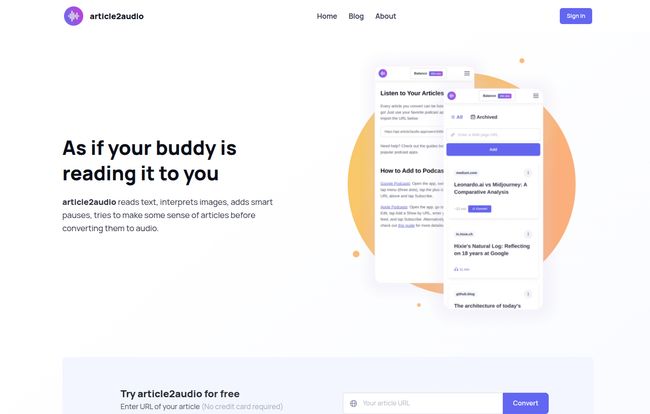
Visit article2audio
The goal is to create an experience that feels less like a computer dictation and more like a human conversation. A lofty goal, for sure. But some of its features get it surprisingly close.
The Standout Features That Genuinely Impressed Me
I’ve seen a lot of AI tools with flashy feature lists that amount to nothing. But a few of article2audio's capabilities felt like they were designed by someone who has actually suffered through bad TTS before.
It Describes Images! Yes, Really.
This was the first thing that made me sit up and pay attention. Think about how much context is lost when a standard reader hits an `` tag. It just skips it. You hear a sentence, then a pause, then the next sentence, and you have no idea you just missed a crucial graph, a funny meme, or a key product shot. article2audio's AI actually looks at the image and gives you a hint. It’s not a super-detailed description, but it’s enough. Instead of awkward silence, you might hear, “The article includes an image of a bar chart showing rising user engagement.” Suddenly, the text that follows makes a whole lot more sense. This is a game-changer for anyone who listens to data-heavy or visual articles.
Making Sense of Messy Tables
If you thought listening to a robot read a paragraph was bad, you've clearly never experienced it trying to read a data table. It’s a special kind of audio torture. "Row one, column one: Q1 Sales. Row one, column two: $10,000..." It's just awful. article2audio sidesteps this nightmare entirely. Instead of reading it cell by cell, its AI synthesizes the information. It gives you the gist, the key takeaways. For example, it might say, “A table is presented, showing that sales peaked in the third quarter.” Thank you! That’s all I needed to know. It respects your time and your sanity.
The "Buddy" Voice and That Podcast Feed
Okay, the voice itself. Is it really like a buddy? Well, it's pretty darn good. I'd say it's more like a professional podcast host or a skilled audiobook narrator than my actual buddy Dave, which is probably for the best (sorry, Dave). It's natural, with realistic inflections and pacing. There are currently only two options—one male and one female voice—which is a bit of a letdown, but the quality is there. They sound warm and engaging.
But the real killer feature for me is how you listen. It doesn't just email you an MP3 file. It generates a personal podcast feed. You copy a single URL and paste it into your favorite podcast app (Apple Podcasts, Google Podcasts, Pocket Casts, whatever). From then on, every article you convert just shows up in that feed like a new episode. It's like having a personalized, on-demand podcast of your reading list. I’ve started calling it my “Pocket for your ears,” and I’m not even mad at myself for it.
Let's Talk Money: The Pricing Model
I'm so tired of every single service demanding a monthly subscription. It's death by a thousand cuts. article2audio zigs where everyone else zags with a simple pay-as-you-go model. It’s refreshing.
| Model | Price | Commitment |
|---|---|---|
| Pay-as-you-go | $2.22 per hour of generated audio (excl. tax) | None |
This approach is perfect for the occasional user. If you just want to convert a few long articles a month for your commute, it's incredibly cost-effective. You're not paying for a service you're not using. However, if you're a true power user looking to convert dozens of hours of content each month, that $2.22/hour could add up. You'll have to do the math for your own use case, but I for one appreciate the transparency and lack of commitment.
The Not-So-Perfect Parts
No tool is perfect, and it’s important to be honest about the downsides. While I'm pretty high on article2audio, it has a few clear limitations that might be deal-breakers for some.
- English-Only: Right now, the service only supports English. For a global audience or for those who read articles in multiple languages, this is a major drawback. They state they have no plans to add other languages soon, which is a shame.
- Limited Voice Selection: As mentioned, you get one male and one female voice. They are good voices, but choice is always better. In a market where some competitors offer dozens of voices and accents, two feels a bit sparse.
- No Native App: Some people just want a dedicated app on their phone. While I think the podcast feed solution is brilliant and arguably more flexible, the lack of a traditional iOS or Android app might turn some users off.
My Final Verdict: Is article2audio Worth Your Time and Money?
So, does it live up to the “buddy reading to you” promise? In spirit, yes. It's a massive, thoughtful upgrade from the monotonous, soul-crushing robot readers we've been forced to endure. It's not perfect, and it won't be the right fit for everyone, especially non-English speakers or those who need a huge library of voices.
But for the first time, I've found a text-to-speech tool that seems to respect the content—and the listener. The intelligent handling of images and tables isn't a gimmick; it's a fundamental improvement to the listening experience. The pay-as-you-go pricing respects my wallet, and the podcast feed integrates beautifully into my existing workflow.
If you're like me, with a reading list a mile long and not enough hours in the day, I’d say give it a shot. They let you try it for free without a credit card. It might just be the buddy your ears have been waiting for.
Frequently Asked Questions
What makes article2audio different from other TTS tools?
The main difference is its ability to interpret content before converting it. It doesn't just read text; it provides summaries for tables and descriptive hints for images, creating a much more complete and natural listening experience.
How do I listen to my converted articles?
article2audio provides a personal podcast feed URL. You can add this URL to almost any podcast app (like Apple Podcasts, Google Podcasts, Spotify, or Pocket Casts) to have your articles appear automatically as new episodes.
Is there a subscription plan or a free trial?
There is no subscription plan. It uses a pay-as-you-go model where you pay per hour of generated audio. They do offer a free trial so you can test the service before committing any money.
What languages and voices are available?
Currently, article2audio only supports English. It offers two high-quality voices: one male and one female. The company has stated they don't have immediate plans to add more languages.
Can I use the audio for commercial purposes?
Based on their FAQ, commercial use for the text-to-speech materials is allowed. This is great for content creators who might want to turn their blog posts into podcast episodes for their audience. Of course, you should always check their latest terms of service for the most up-to-date information.
